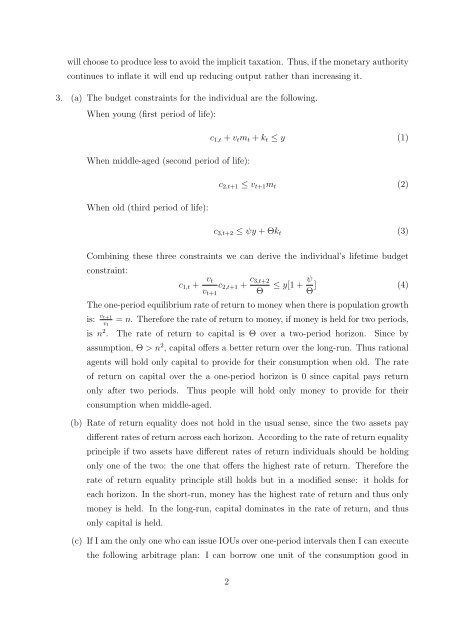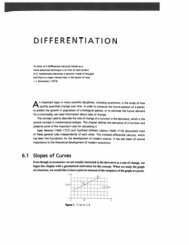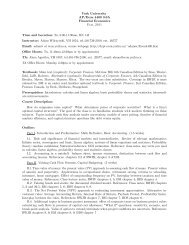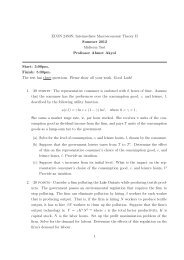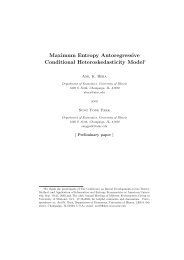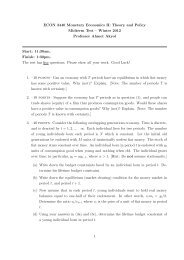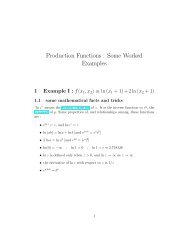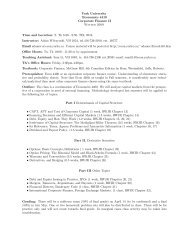Solution - York University
Solution - York University
Solution - York University
You also want an ePaper? Increase the reach of your titles
YUMPU automatically turns print PDFs into web optimized ePapers that Google loves.
will choose to produce less to avoid the implicit taxation. Thus, if the monetary authoritycontinues to inflate it will end up reducing output rather than increasing it.3. (a) The budget constraints for the individual are the following.When young (first period of life):c 1,t + v t m t + k t ≤ y (1)When middle-aged (second period of life):c 2,t+1 ≤ v t+1 m t (2)When old (third period of life):c 3,t+2 ≤ ψy + Θk t (3)Combining these three constraints we can derive the individual’s lifetime budgetconstraint:c 1,t +v tv t+1c 2,t+1 + c 3,t+2Θ ≤ y[1 + ψ Θ ] (4)The one-period equilibrium rate of return to money when there is population growthis: v t+1v t= n. Therefore the rate of return to money, if money is held for two periods,is n 2 . The rate of return to capital is Θ over a two-period horizon. Since byassumption, Θ > n 2 , capital offers a better return over the long-run. Thus rationalagents will hold only capital to provide for their consumption when old. The rateof return on capital over the a one-period horizon is 0 since capital pays returnonly after two periods.consumption when middle-aged.Thus people will hold only money to provide for their(b) Rate of return equality does not hold in the usual sense, since the two assets paydifferent rates of return across each horizon. According to the rate of return equalityprinciple if two assets have different rates of return individuals should be holdingonly one of the two: the one that offers the highest rate of return. Therefore therate of return equality principle still holds but in a modified sense: it holds foreach horizon. In the short-run, money has the highest rate of return and thus onlymoney is held. In the long-run, capital dominates in the rate of return, and thusonly capital is held.(c) If I am the only one who can issue IOUs over one-period intervals then I can executethe following arbitrage plan: I can borrow one unit of the consumption good in2


